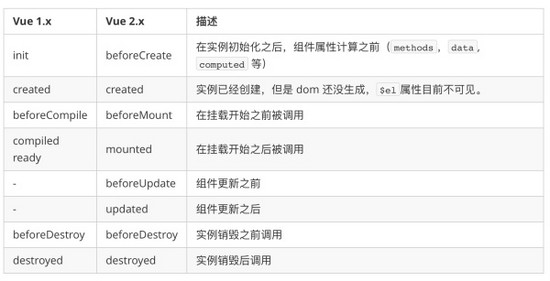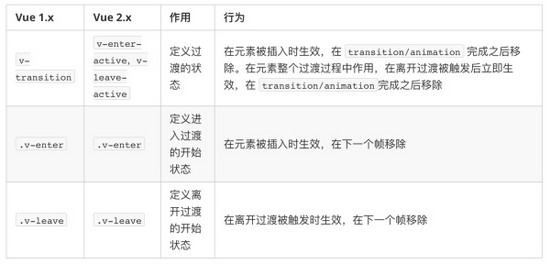
Vue 升级小记
最近接手了一个 Vue 1.0 的陈年老项目,需要将其升级到Vue 2.0。下面记录一下升级过程:
安装迁移工具
首先需要安装 vue-migration-helper CLI 工具:
- 控制台运行命令:
npm install --global vue-migration-helperCLI 工具来帮助项目从Vue 1.x 迁移到 2.x。 它扫描文件以查找特定于 Vue 的代码,并对需要升级的代码提供详细的警告。vue-migration-helper的介绍说明告诉我们它大概能捕获 80% 的升级帮助信息,而不是全部。所以终端输出的帮助信息并不是完全正确的,在升级时不要盲目copy & paste,还是要根据实际情况去改写。 - 进入当前的项目:运行:
vue-migration-helper
工具识别出了108 个需要升级的点:

由于这个古董项目不是用 Vue-CLI 构建的,为了避免在升级依赖上出错,我直接新起了一个 Vue-CLI 项目,将老项目中的业务部分进行迁移,这个是最快最能避免踩坑的解决方案(当然,这么做是因为踩坑了,所以爬起来了=_=)与当前最新的 Vue-CLI 的依赖版本做了对比:
"vue": "^1.0.24"to"vue": "^2.5.2""vue-router": "^0.7.13"to"vue-router": "^3.0.1""vuex": "^2.4.0"to"vuex": "^3.0.1""webpack": "^2.4.1"to"webpack": "^3.6.0""vue-loader": "^8.5.2"to"vue-loader": "^13.3.0"
升级代码
对于108 个需要升级的点来说,花费的时间远比想象的要多,除了根据官方文档进行迁移升级之外,运行项目还是会有很多报错,下面总结了一下改动比较多的地方。
1. 过滤器
移除内置过滤器
Vue 2.0 不再提供内置过滤器。可以创建自己的过滤器或者引入外部库如 moment.js , accounting.js 来对时间和货币等进行格式化。之前项目中用到的 orderBy 方法已经被弃用了,根据升级指南的建议,直接引入了 lodash 工具库,并使用计算属性重构。
// Vue 1.x
<div v-for="tag in productTags | orderBy 'location'">
{{ tag.tagTitle }}
</div>
// Vue 2.x
<div v-for="tag in productTags">
{{ tag.tagTitle }}
</div>
import orderBy from 'lodash/orderBy'
...
...
...
computed: {
productTags: function () {
return orderBy(this.tags, 'location')
}
}
...
过滤器参数符号变更
// Vue 1.x
<div class="time">{{ item.appDate | date 'yyyy-MM-dd' }}</div>
// Vue 2.x
<div class="time">{{ item.appDate | date('yyyy-MM-dd') }}</div>
2. Vue Router
vue-router 的改动是相对来说非常大的,大部分都可以参考 官方文档 去修改,如:
router.go()改成了router.push()router.map()被废弃,使用routes选项数组- 使用
router-link替换了v-link route.refresh改成了route.meta.refresh
对于 beforeEach 来说现在是异步工作的,并且携带一个 next 函数作为其第三个参数, beforeEach 经常用来设置页面的 title ,而 Vue 2.0 to 函数的使用也有一些改变,如下:
// Vue 1.x
router.beforeEach(({ to, next }) => {
if (to.title) {
...
}
next()
})
// Vue 2.x
router.beforeEach((to, from, next) => {
if (to.meta.title) {
...
}
next()
})
对于路由挂载根实例的改动,Vue 2.0 不再会有一个特殊的 API 用来初始化包含 Vue Router的 app ,而只需要传一个路由属性给 Vue 实例,如下:
// Vue 1.x
router.map(routes)
router.start(Vue.extend({
store,
components: {
app: require('./app.vue')
}
}), 'body')
// Vue 2.x
new Vue({
el: '#app',
router,
store,
template: '<App/>',
components: { App }
})
3. 生命周期
生命周期钩子也是这次升级中比较大的改进点,对照 vue1.0文档 和 vue2.0 文档 ,异同如下表格:

因此主要的改动点是:使用 mounted 钩子函数替换 ready 钩子函数
4. transition
Vue 2.0 对动画做了非常大的更新,原来的 transition 属性已经被彻底废弃掉了,而使用 transition 或 <transition-group> 来包裹元素去实现过渡效果,项目中关于动画的代码都要重新写,包括 CSS、 HTML ,还有 Javascript 钩子函数的改变。
在要升级的这个项目中,关于 transition 的升级差不多有10多个,其中大部分的改动都可以按照迁移工具去 copy & paste , 但是还是要清楚其中的异同,再去做修改。不然就会出现,错误提示消失了,但是动画不生效的情况。
过渡CSS 变化

举个栗子:
// Vue 1.x :
<div v-if="isShow" transition="info-fade">
<span> hello world ! </span>
</div>
.info-fade-transition {
transition: all .3s ease;
}
.info-fade-enter, info-fade-leave {
opacity: 0;
}
// Vue 2.x
<transition name="info-fade">
<span v-if="isShow"> hello world ! </span>
</transition>
.info-fade-enter-active, info-fade-leave-active {
transition: all .3s ease;
}
.info-fade-enter, info-fade-leave {
opacity: 0;
}
Javascript 钩子
Vue 2.0 transitions 能够通过组件应用,它们不再只是一种单独类型,因此全局的 Vue.transition() 方法和 transition 配置都被丢弃。现在可以通过组件的属性和方法配置内嵌的过渡:
// Vue 1.x
Vue.transition('expand', {
beforeEnter: function (el) {
el.textContent = 'beforeEnter'
},
enter: function (el) {
el.textContent = 'enter'
},
...
})
// Vue 2.x
methods: {
// 过渡进入
// 设置过渡进入之前的组件状态
beforeEnter: function (el) {
// ...
},
// 设置过渡进入完成时的组件状态
enter: function (el, done) {
// ...
done()
},
...
}
5. Class 与 Style 绑定
// Vue 1.x
<div class="qa-item-question {{item.viewStatus === 1 ? 'isread' : ''}}"> </div>
如果使用 vue-migration-helper 工具,它会提示你将老的代码替换成这样:
// Vue 2.x
<div v-bind:class="'qa-item-question ' + item.viewStatus === 1 ? 'isread' : ''"></div>
然而由于运算符优先级问题,最后的结果可能会是 :
<div class=""></div>
因此,应该注意的不能完全依赖升级工具的提醒去直接 copy & paste 。
6. 双向数据绑定
Replace :visible.sync="xxx" with :visible="xxx", then $emit an event from the child component to trigger an update to xxx in the parent
Vue 2.x 中,为了规范数据流动,砍掉了 .sync ,用来阻止子组件影响父组件所绑定的值,因为 .sync 破坏了单向数据流。但是很多情况下还是会需要双向绑定的,比如 dialog 弹窗,当关闭时,将此状态返回给父组件。
而 Vue 2.x 中,子组件只能被动接收父组件传递过来的数据,并在子组件内不能修改由父组件传递过来的 props 数据。每次父组件更新时,子组件的所有 prop 都会更新为最新值,因此不应该在子组件内部改变 prop ,如果我们尝试直接修改 prop 属性的值,就会有警告提示:
[Vue warn]: Avoid mutating a prop directly since the value will be overwritten whenever the parent component re-renders. Instead, use a data or computed property based on the prop's value. Prop being mutated:
"xxx" (found in component )
Vue2.0 的官方文档也给出了解决方案:
定义一个局部变量,并用 prop 的值初始化它
而对于 .sync ,Vue 2.3 + v-bind 指令中将其引进,成为一枚语法糖,它会被扩展为一个自动更新父组件属性的 v-on 监听器。
7. $loadingRouteData
Vue 2.0 移除了 $loadingRouteData 钩子。如果我们需要判断页面数据是否加载完成,需要自定义一个属性(例如: isLoading)
8. 其他简单的改动
- v-for
track-byto:key- 废弃了
$index
- HTML 的计算插值
{{{ foo }}}已经移除,取代的是v-html指令 v-el和v-ref合并成ref属性- 在 Vue 的实例中不能使用
Vue.set和Vue.delete - 使用
@click.native监听根元素的原生事件,@click传的只是一个方法 - 废弃了
Array.prototype.$set/$remove,用Vue.set或者Array.prototype.splice取代
9. 其他报错
浏览器报错:
[Vue warn]: Do not use built-in or reserved HTML elements as component id: dialog
因为 dialog 在 HTML5 里面是个原生的标签解决方法:重命名 components 里面组件的名称
总结
上面只是简单梳理了一下该项目在升级时遇到的一些问题,但并不是所有。单单是升级 webpack ,其实要修改的点就有很多,但是对于陈年的经过 N 手的老项目来说,并不适合直接升级,可能会造成项目更加混乱,因此这里走了一点捷径,绕过了很多升级 webpack 会遇到的坑。升级遇到的大部分问题官方文档都有详细的描述,遇到问题,沉着冷静别惊慌,我们的目标是:远离 bug,不受伤。。。
来自:https://zhuanlan.zhihu.com/p/31436018

- 本文固定链接: https://zxbcw.cn/post/5862/
- 转载请注明:必须在正文中标注并保留原文链接
- QQ群: PHP高手阵营官方总群(344148542)
- QQ群: Yii2.0开发(304864863)
